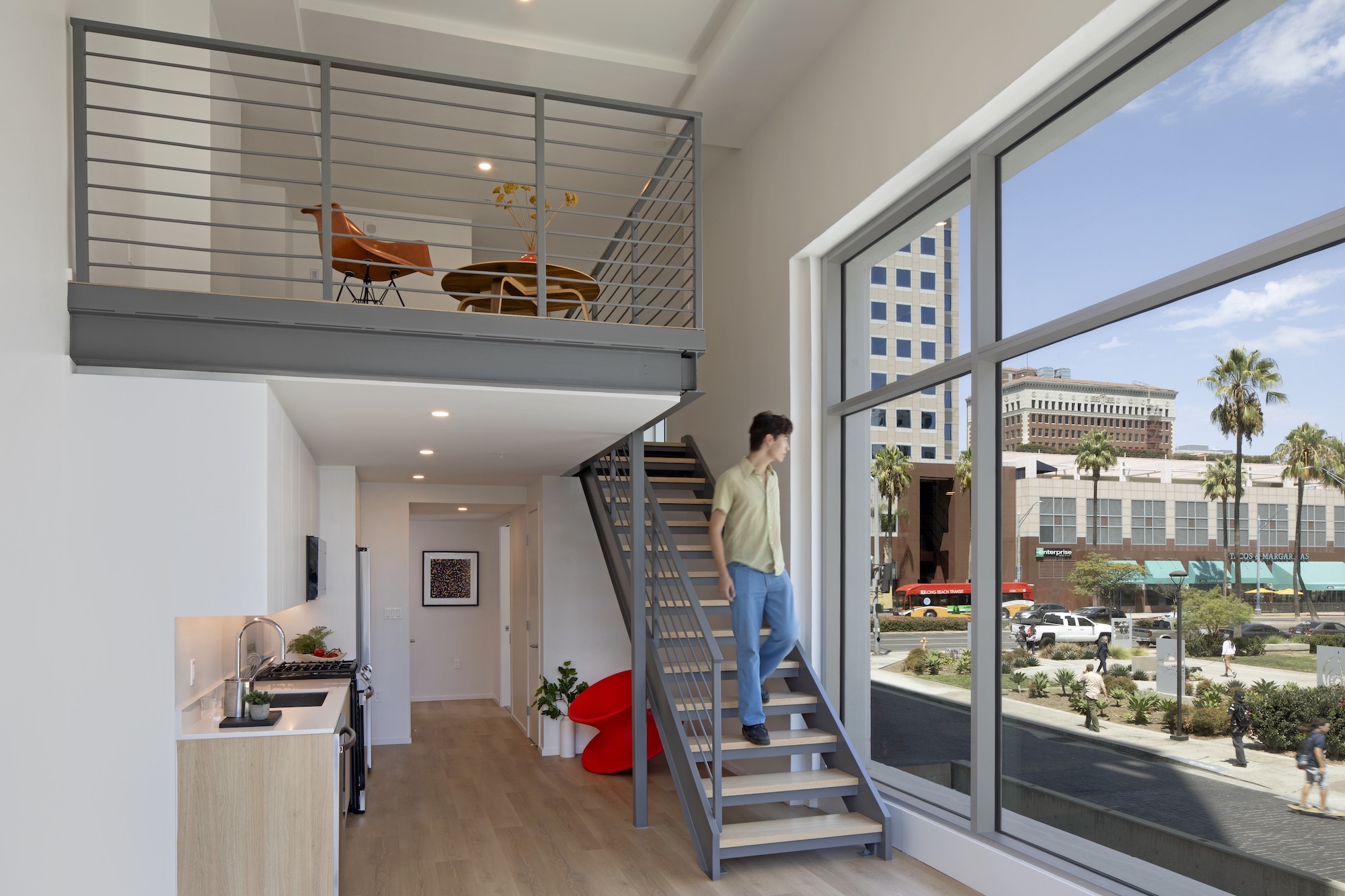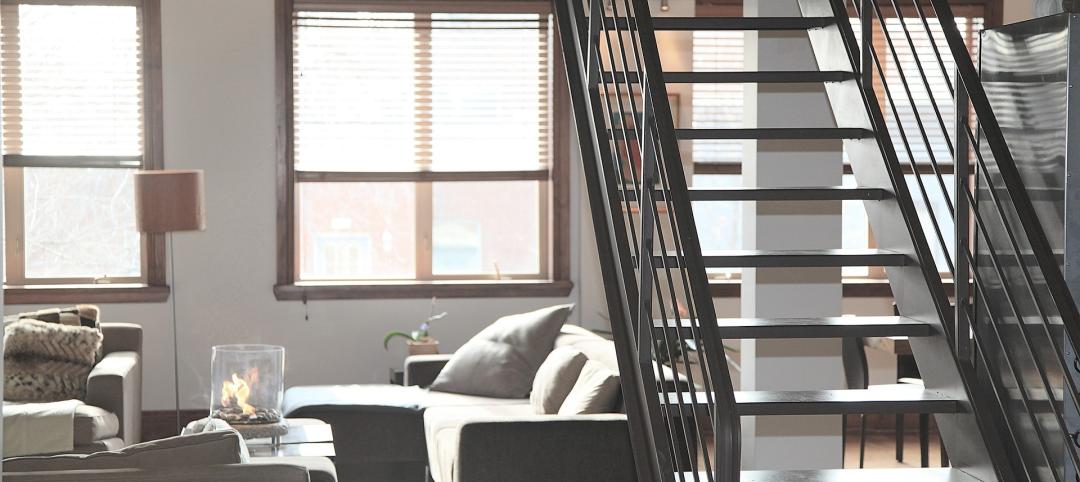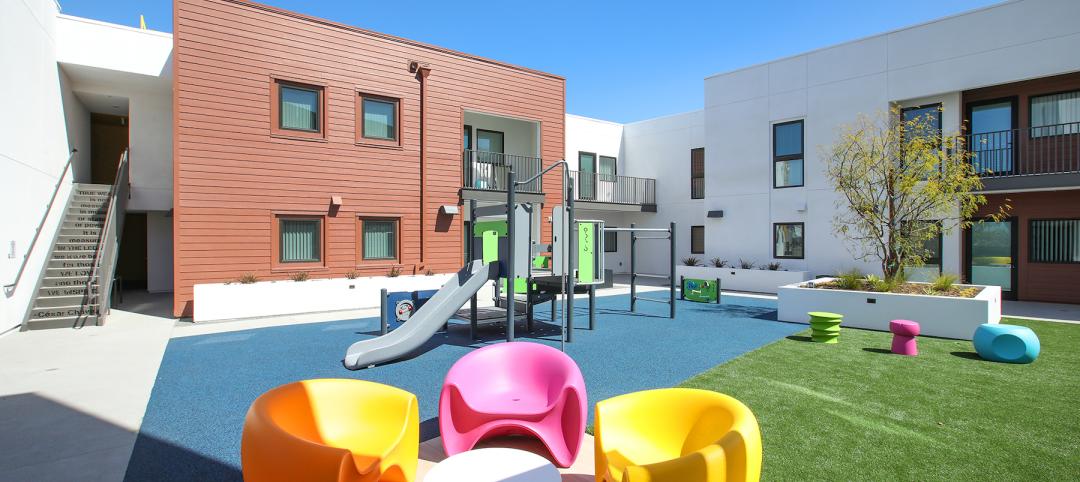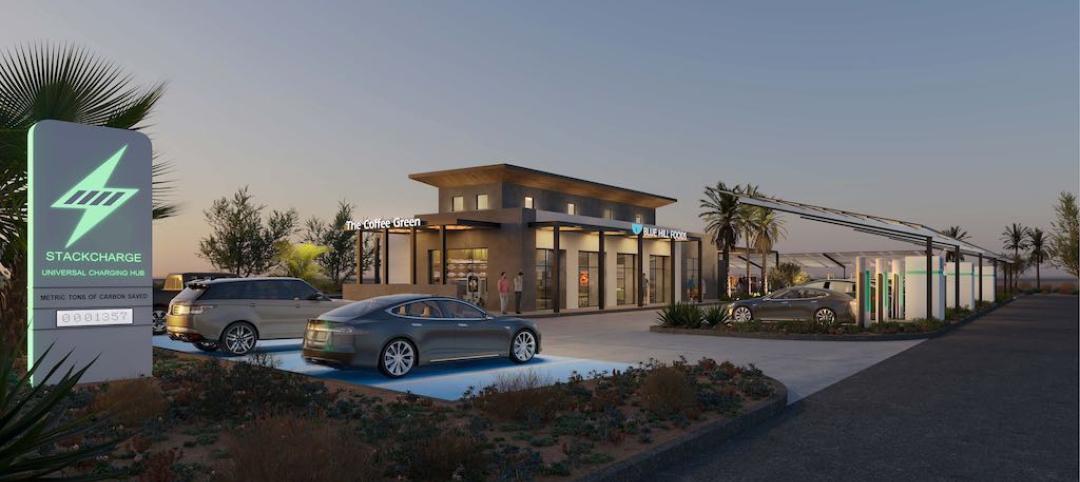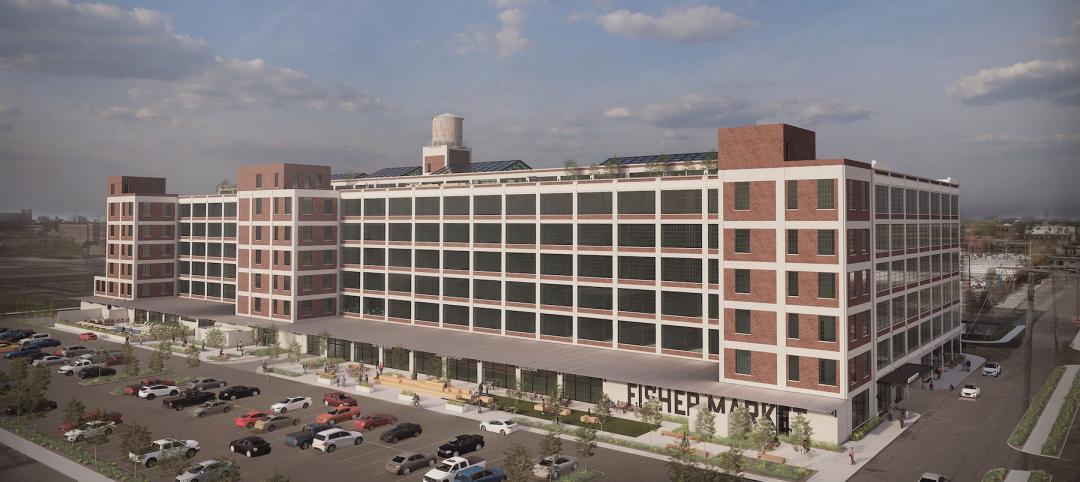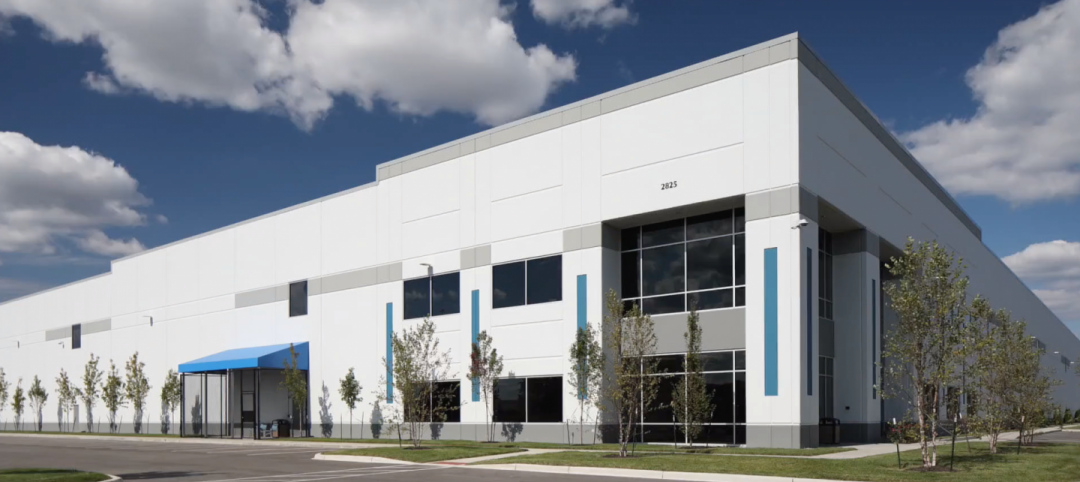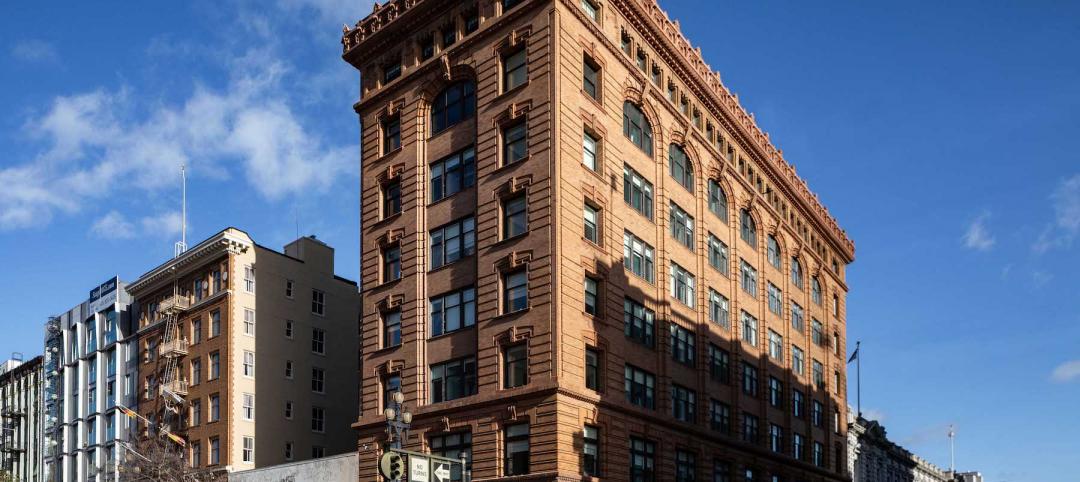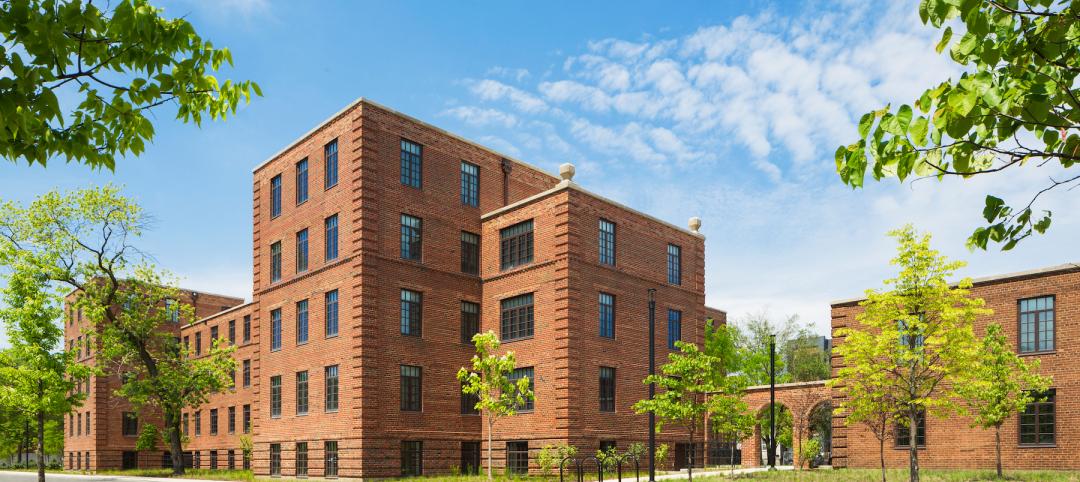A project to convert an underperforming mid-century office tower in Long Beach, Calif., created badly needed market rate housing with a significantly lowered carbon footprint. The adaptive reuse project, composed of 203,177 sf including parking, created 106 apartment units out of a Class B office building that had been vacant for about 10 years.
The $44 million 200 West Ocean project repurposed existing steel and concrete instead of trashing them, resulting in a 69% reduction in embodied carbon, an estimated 3.19 million Kg of CO2, and prevented some 26 million pounds of material from entering the waste stream.
The design included cutting slots into existing concrete to double the size of all windows, increasing natural daylight, and maximizing views for residents. This transformed an otherwise dark, insular, and flat concrete facade into an inviting, articulated building, producing a more appealing connection between the city fabric and residents.
The massing and floor plans of the building were altered to carve out balconies and outdoor terraces from the façade. More than 75% of the units have substantial natural ventilation and direct outdoor patios, allowing residents to benefit from cool ocean breezes. Recessed patios on the south side of the building reduce heat gain and maximize ocean views.
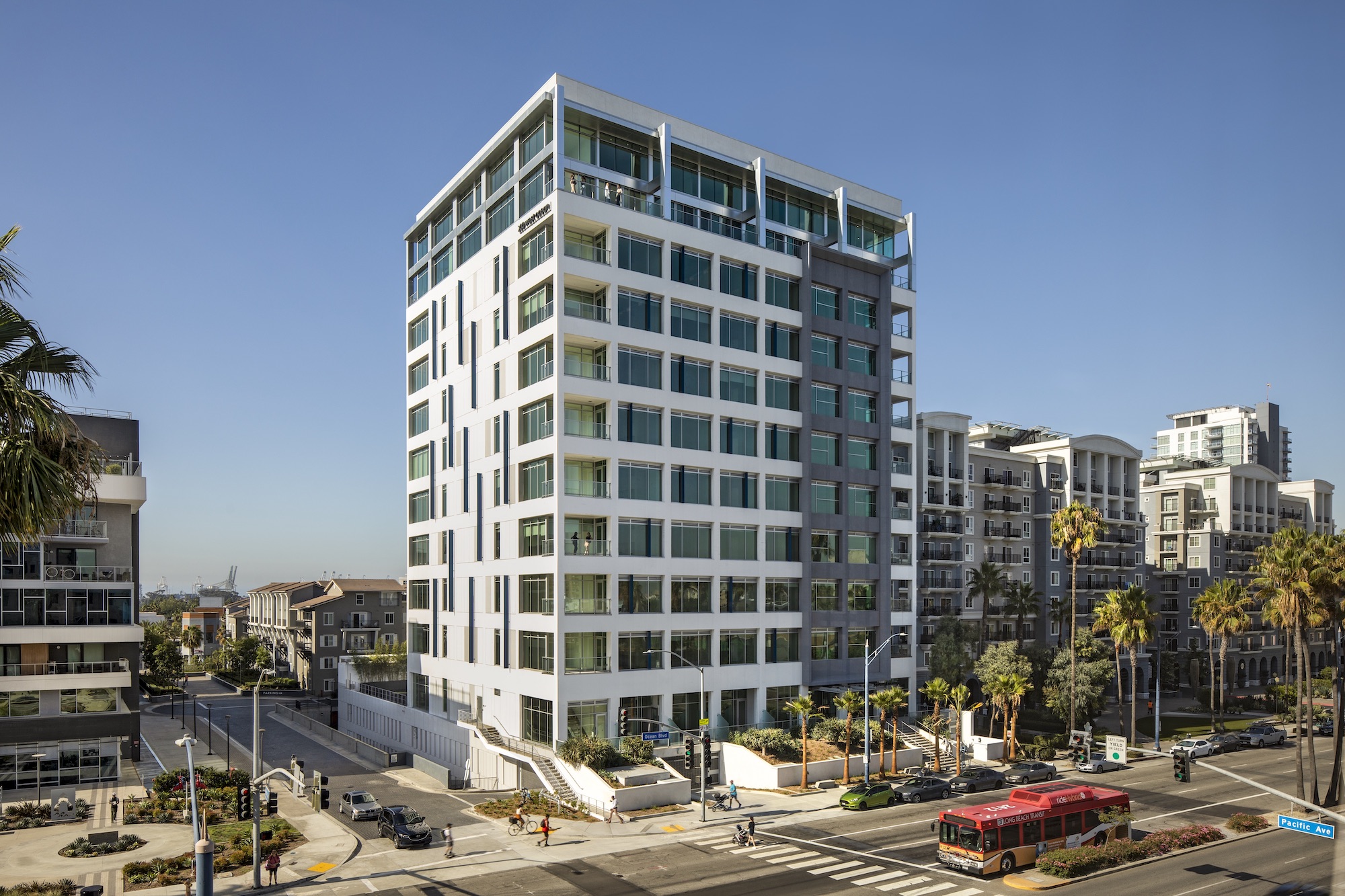
Strengthening part of the parking structure roof enabled design firm Studio One Eleven to add a community room, pool, spa, and barbecue area. Outdated mechanical equipment was removed from the roof of the main building, allowing transformation of the rooftop space into eight two-story penthouse townhomes.
The rooftop stretches beyond the glass facade of the top two stories and is lit from below at night. Interior atriums were included in the four inbound penthouse units. By creating an opening in the rooftop, bedrooms without direct windows could have natural light and ventilation as well as dramatic views through the double-height living room beyond.
Residents have just a five-minute walk to public transit that connects to downtown Los Angeles. The front sidewalk connects directly to the Pike, a promenade of dining, retail, and the Long Beach Convention Center.
On the project team:
Developer: Greystar
Design architect: Studio One Eleven
Architect of record: Studio One Eleven
MEP engineer: Donald Dickerson Assoc.
Structural engineer: Labib Funk and Assoc.
Civil engineer: KPFF
Landscape Architect: Mark Tessier Landscape
Construction Manager: JR van Dijs
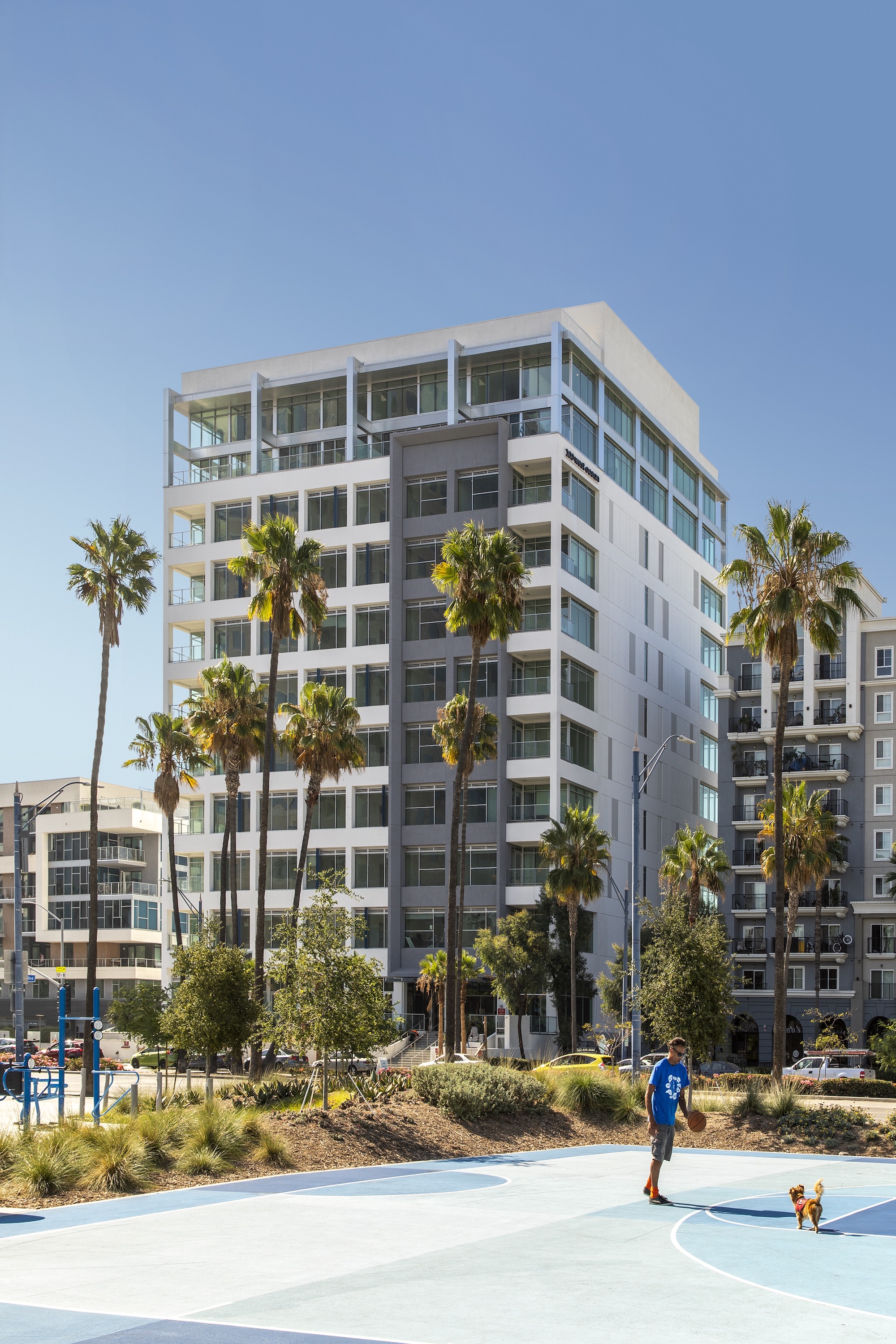
Design essay from architect Studio One Eleven
Here are more details on the project from architect Studio One Eleven:
Originally designed by AC Martin and Associates in 1967, this Class B building was commissioned by the General Telephone Company of California, the largest independent telephone company in the United States during the days of the Bell System, to serve as the headquarters for the southern region. Studio One Eleven was commissioned to repurpose this oceanview building as market rate housing.
Studio One Eleven’s design pays homage to the building’s mid century architectural history and introduces renewed vibrancy with contemporary touches. The original building felt insular with an impenetrable facade and dark windows, so the renovation sought to reverse this relationship with the urban fabric and to invite views and connectivity. The addition of a gray vertical frame over the entry accentuates the building’s presence on Ocean Boulevard. To capitalize on the views and to allow more natural lighting, Studio One Eleven doubled all existing windows in size and cut slots in the concrete bulkhead to make them larger. The outdated rooftop mechanical equipment was removed and two new stories were added to give the building an iconic appearance, furthering the identity of 200 Ocean within a burgeoning downtown.
By drastically changing the floor plans and changing the massing of the building, carving outdoor balconies and terraces from the facade of the building, Studio One Eleven was able to create voluminous, varied, and light-filled units that each have access to the outdoors. The new residential units will have exposed concrete walls in the corridors, tall ceilings and many with balconies with either ocean or city views. Overall, lower units feel connected to the street while upper units are connected to views.
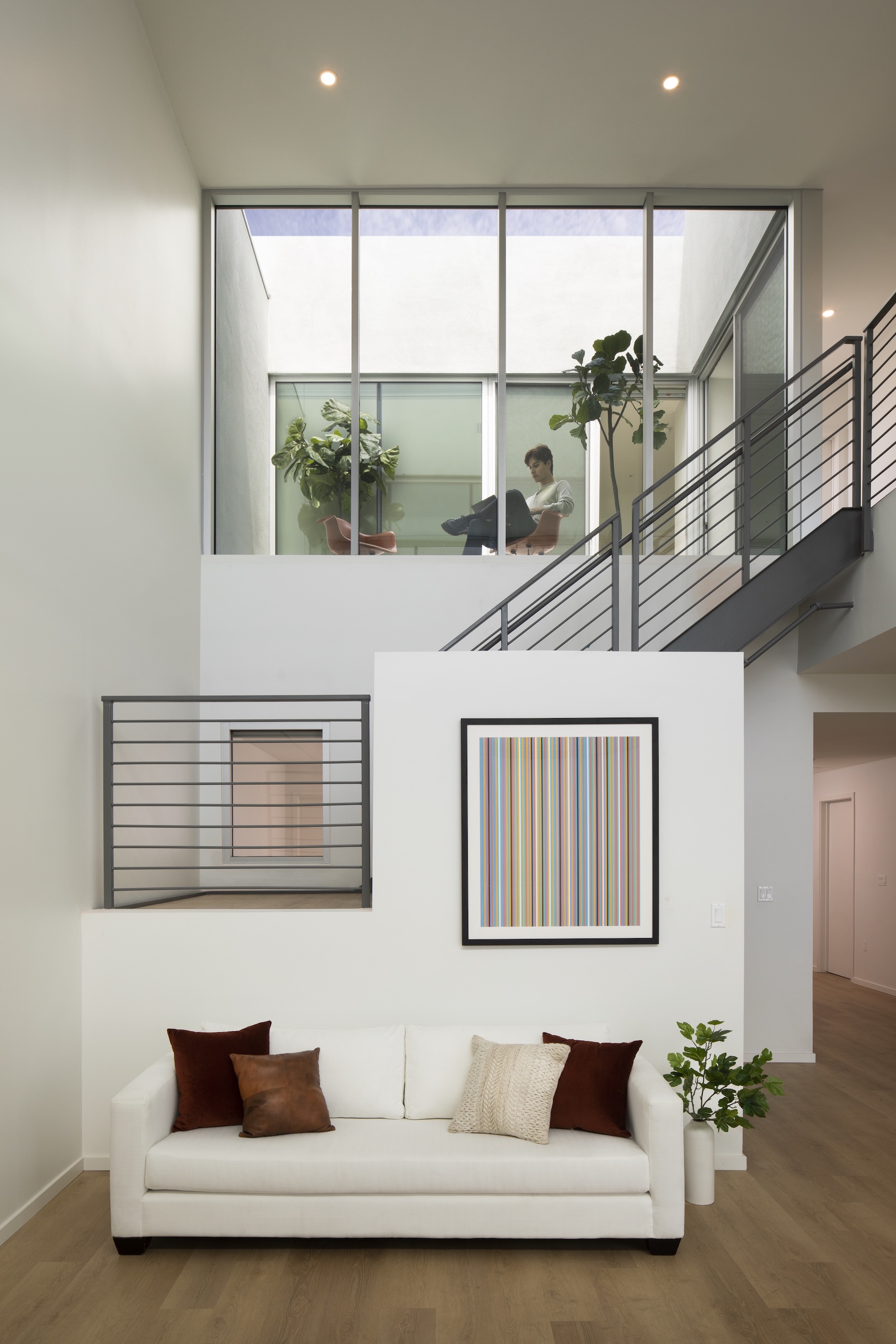
Utilizing the tall ground floor that was originally designed for retail, Studio One Eleven created double height lofts with mezzanines and floor to ceiling windows. On the top floors, inbound townhome units feature interior atriums, created by carving openings in the roof and allowing for interior bedrooms to have direct access to natural light and ventilation. Above the fourth floor, residents have unobstructed views southward over the waterfront, Queen Mary, and Catalina Island beyond, and northward towards downtown Los Angeles and San Gabriel Mountain range beyond. By strengthening part of the parking structure roof, Studio One Eleven was able to add an expansive ground floor amenity deck that features a pool deck and spa, community rooms, and a barbecue area for residents.
Minimizing the overall quantity of material used in a building, especially high-embodied-carbon materials such as concrete, steel, and petrochemical-based insulation products, can significantly reduce the overall embodied carbon of a project. By re-using the existing building for a new purpose, the project results in 69% lowered embodied carbon and 3.19M Kg CO2e emissions avoided, as well as over 26M lbs diverted from the waste stream.
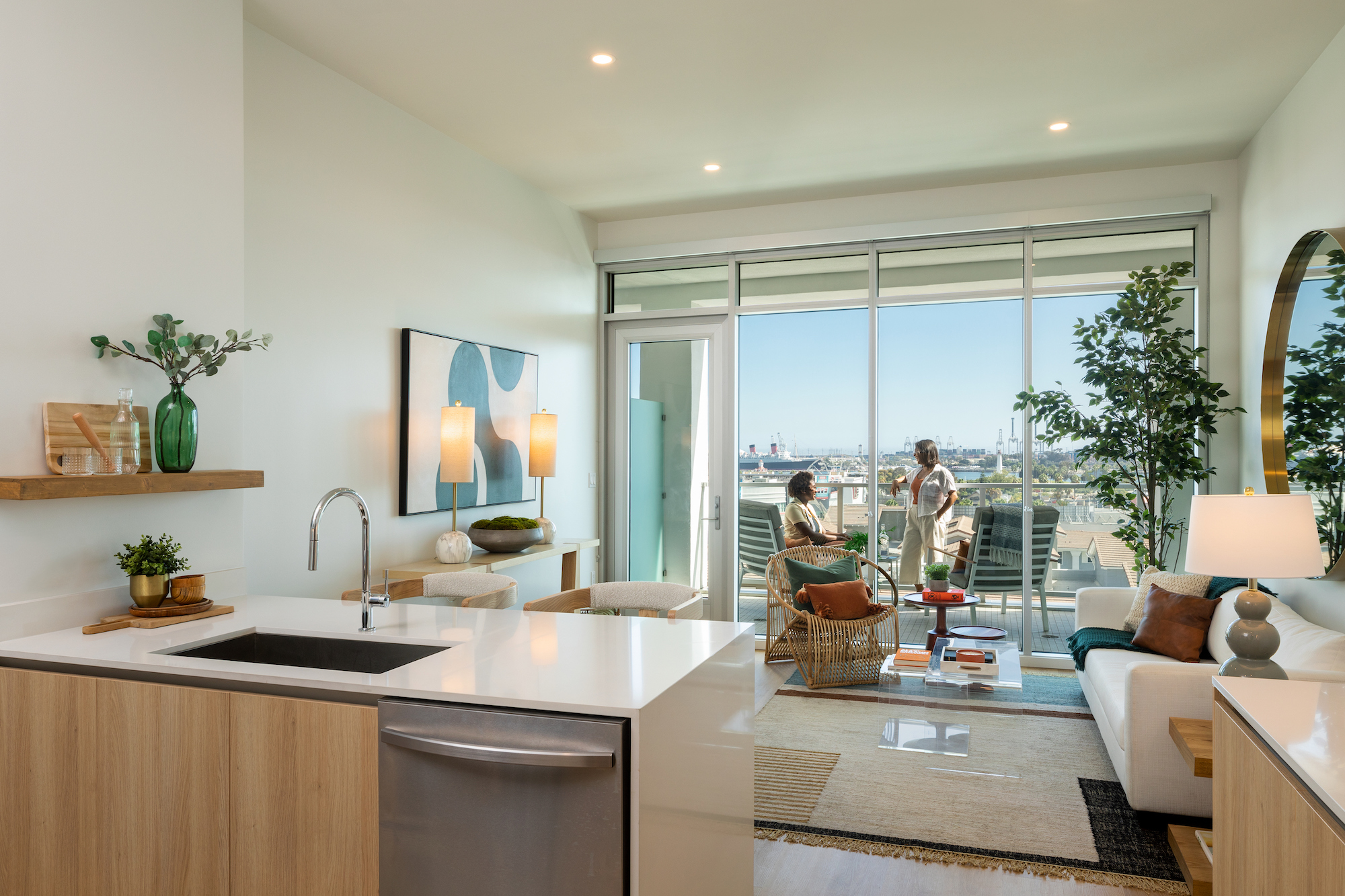
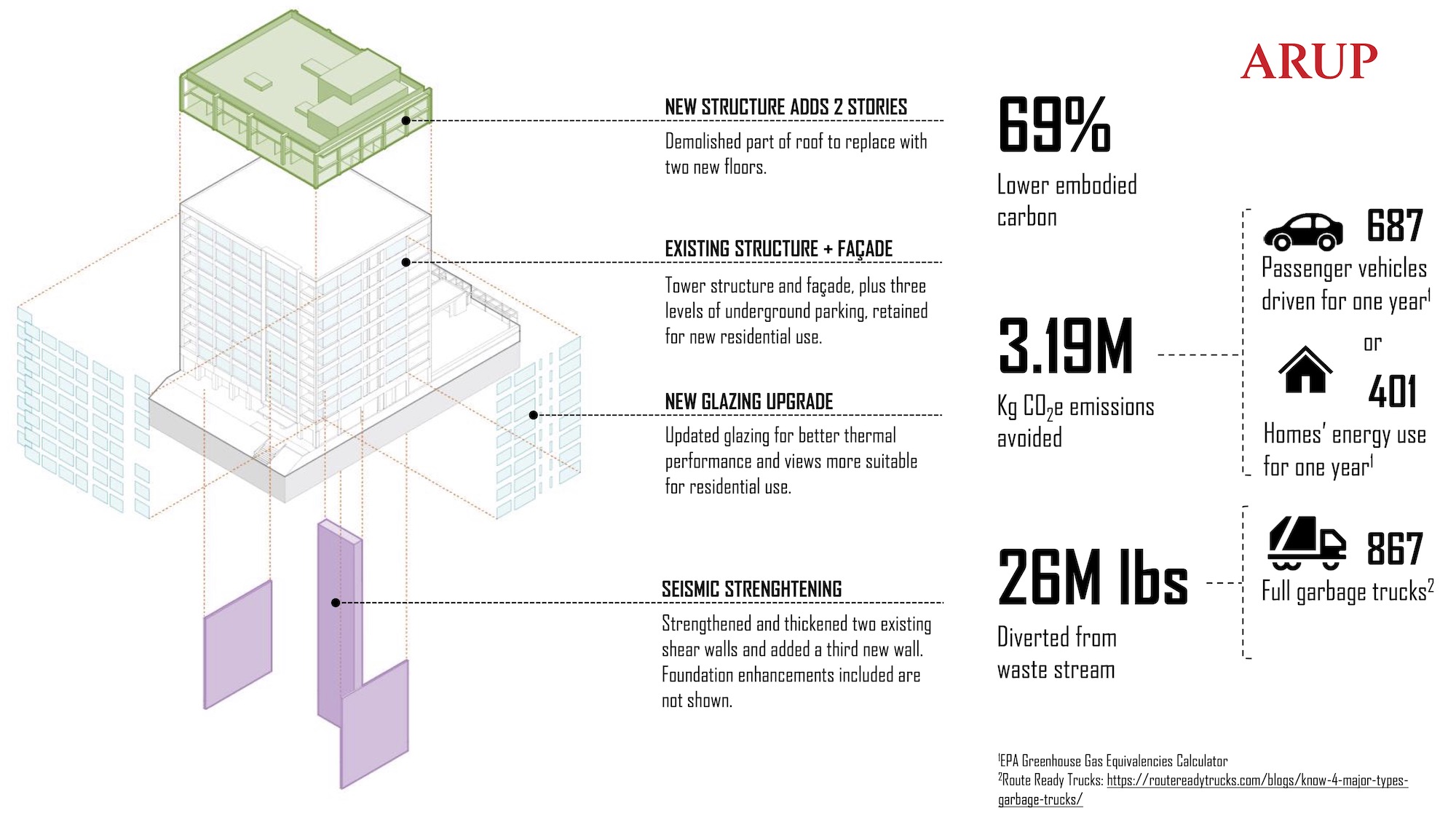
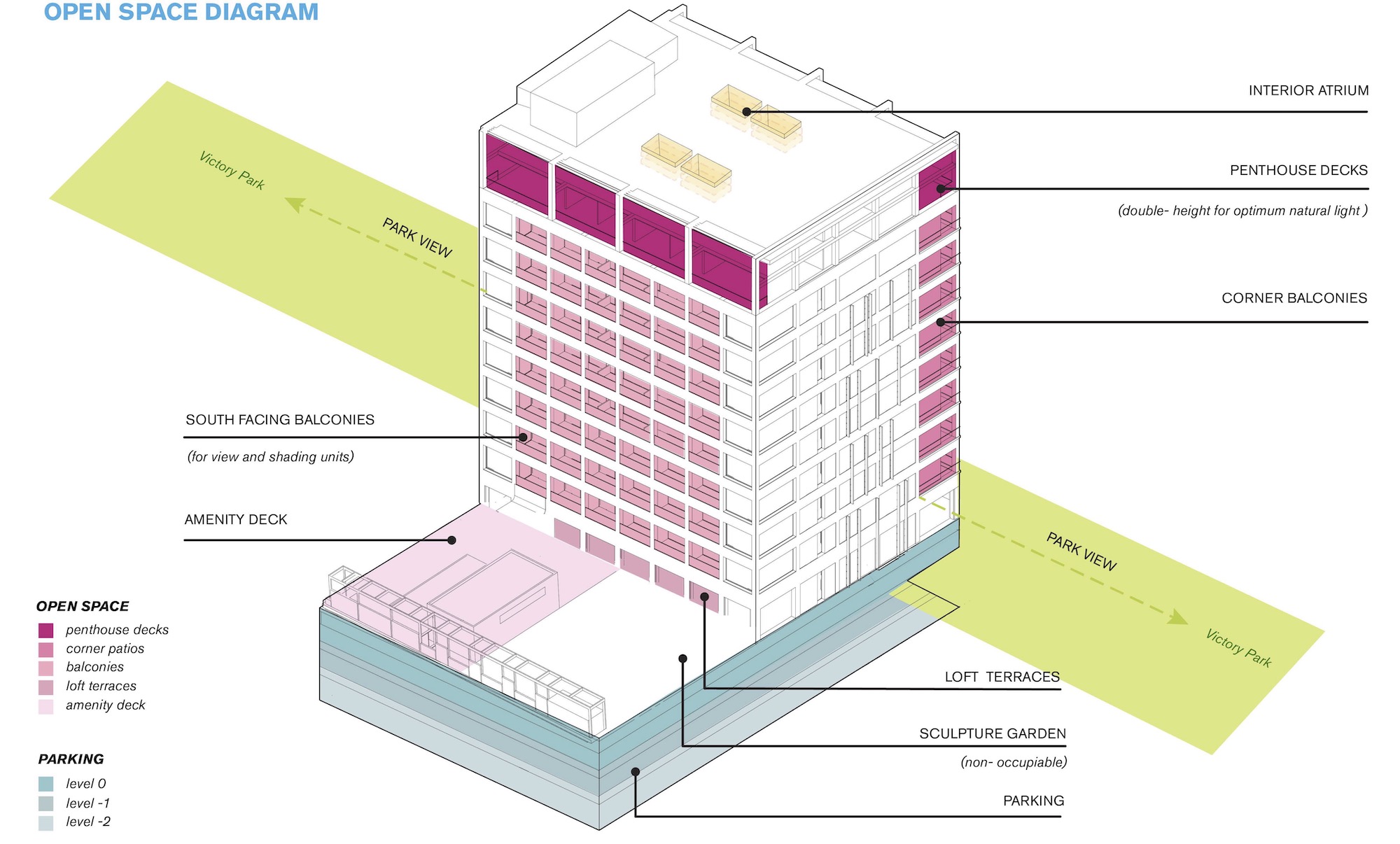
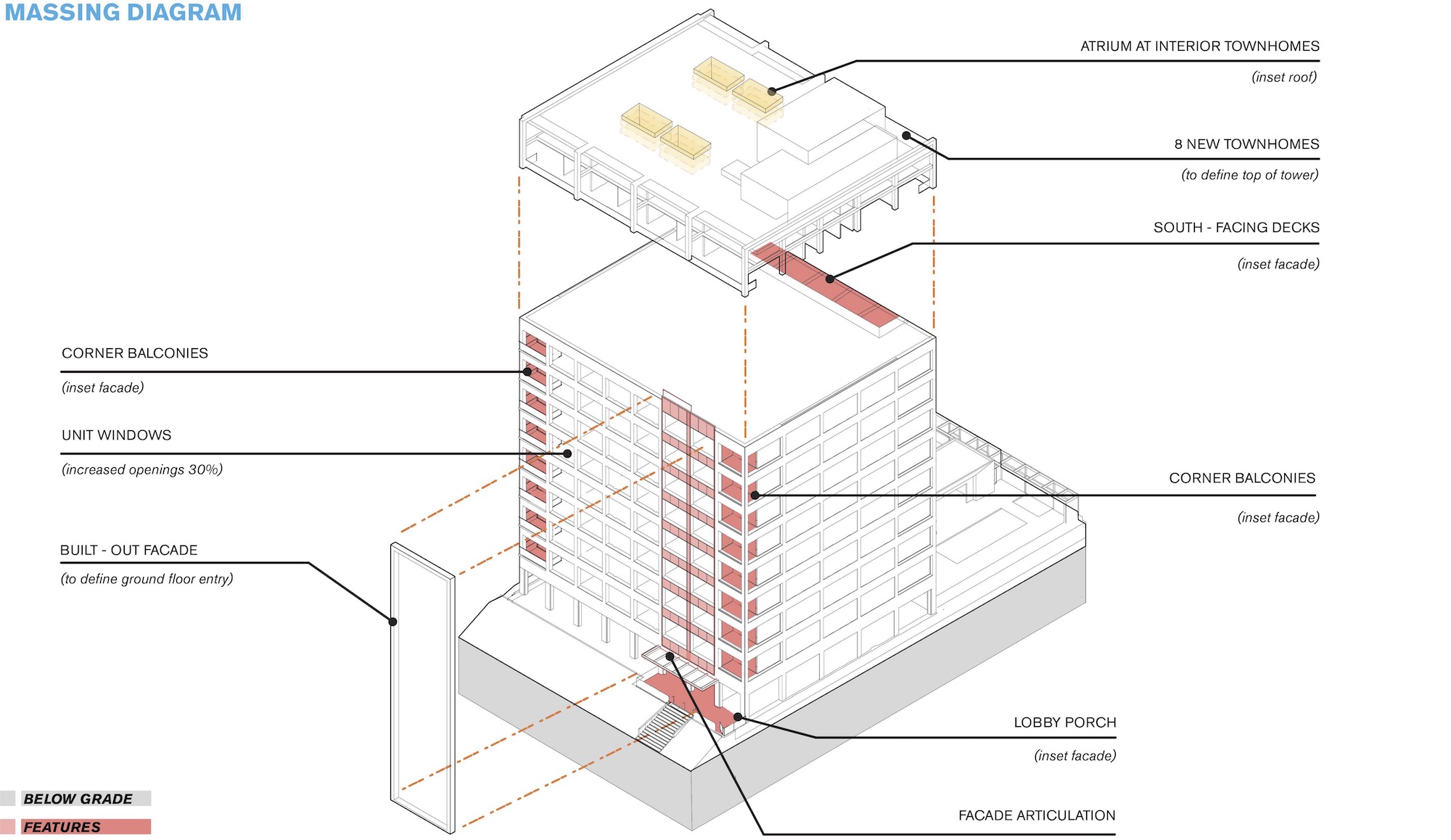
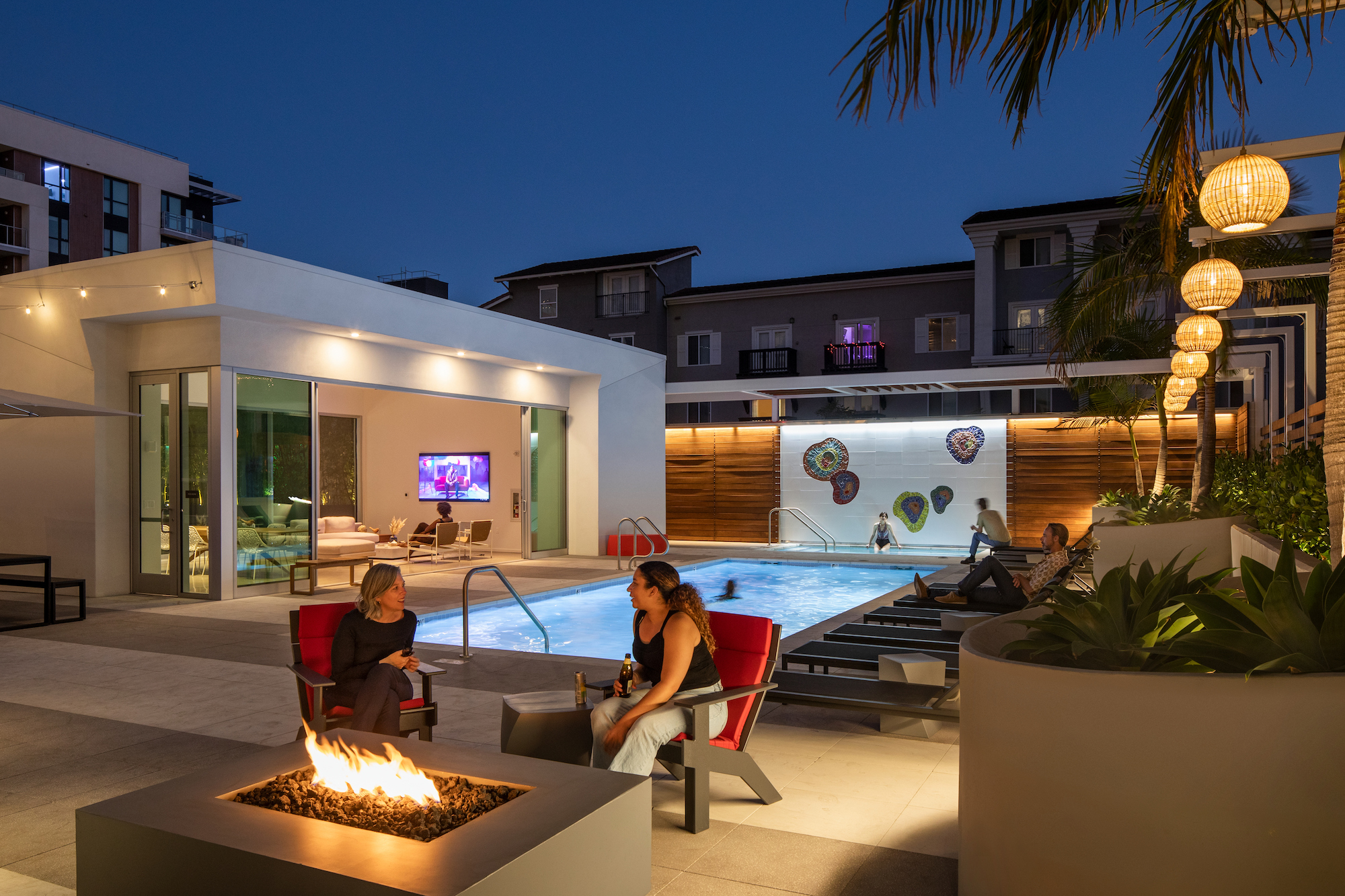
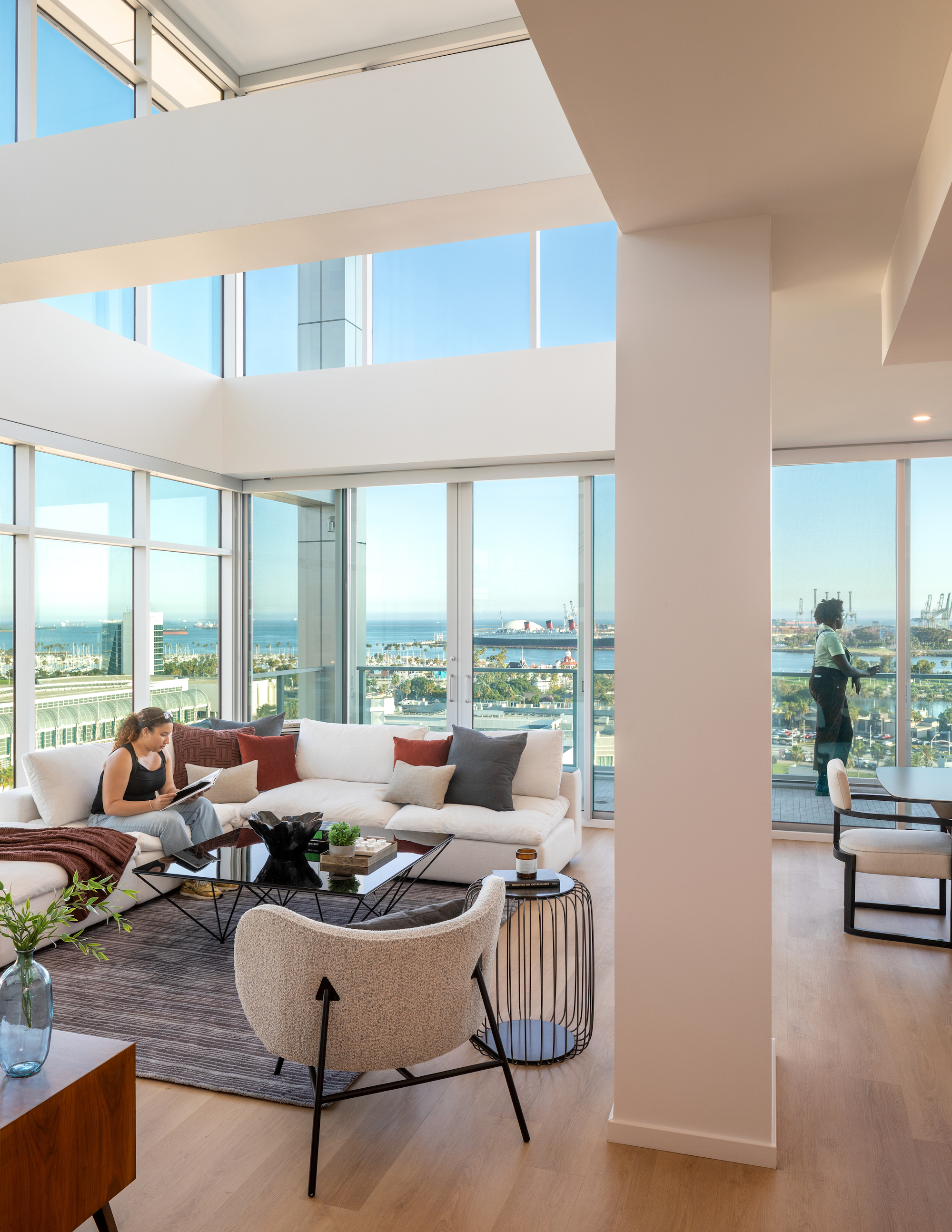
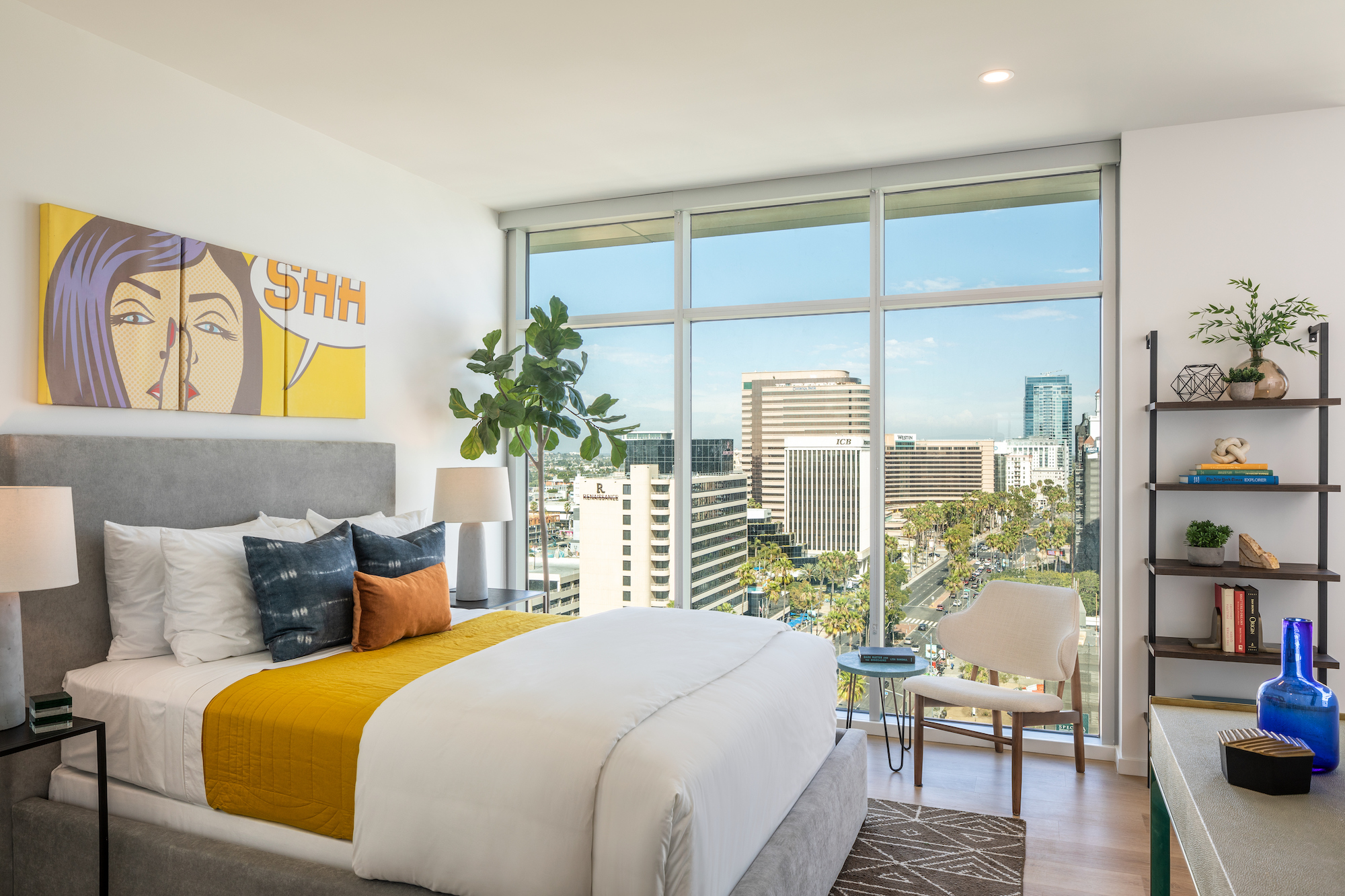
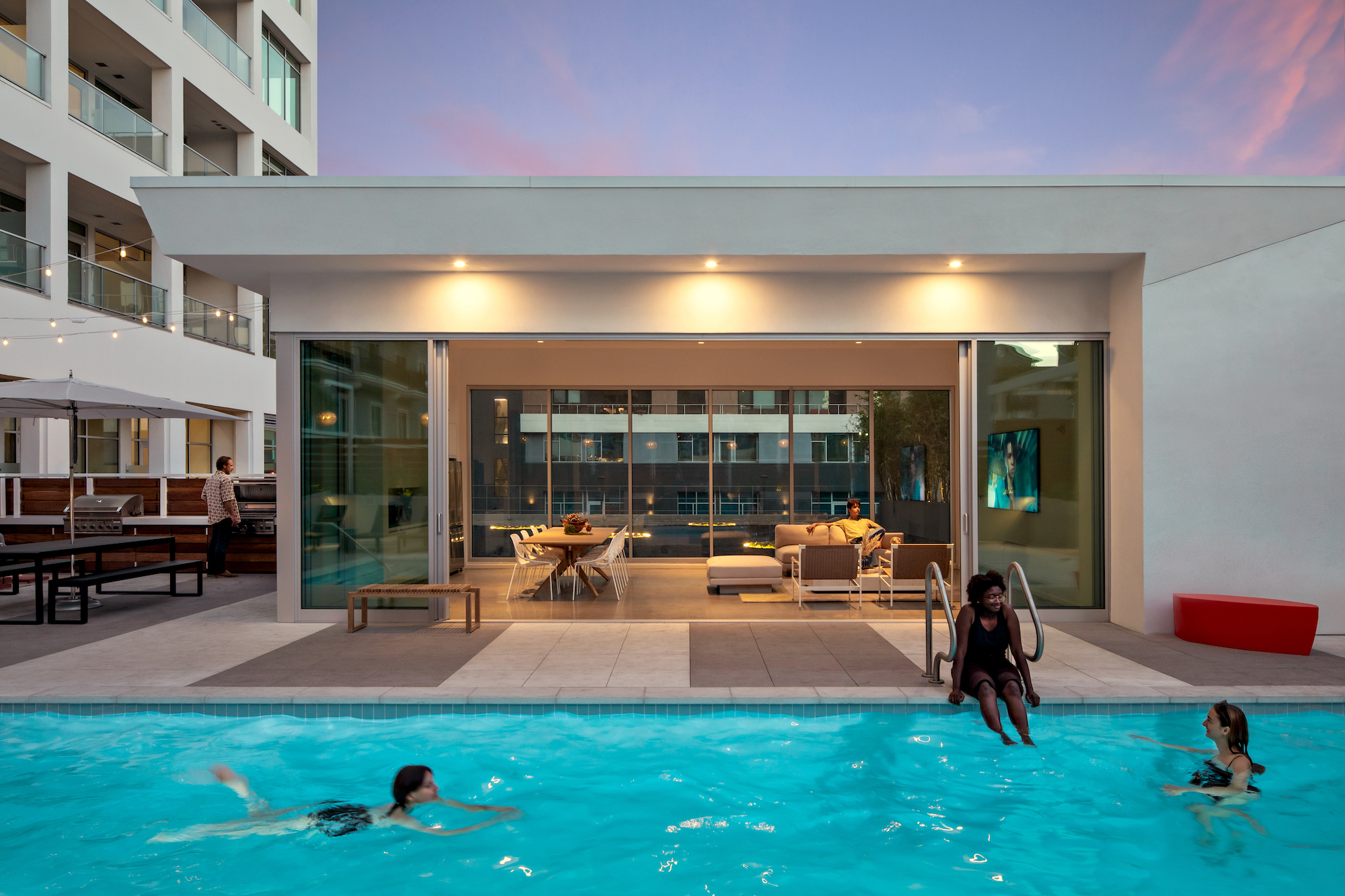
Related Stories
Mixed-Use | Dec 6, 2022
Houston developer plans to convert Kevin Roche-designed ConocoPhillips HQ to mixed-use destination
Houston-based Midway, a real estate investment, development, and management firm, plans to redevelop the former ConocoPhillips corporate headquarters site into a mixed-use destination called Watermark District at Woodcreek.
Multifamily Housing | Nov 29, 2022
Number of office-to-apartment conversion projects has jumped since start of pandemic
As remote work rose and demand for office space declined since the start of the Covid-19 pandemic, developers have found converting some offices to residential use to be an attractive option. Apartment conversions rose 25% in the two years since the start of the pandemic, with 28,000 new units converted from other property types, according to a report from RentCafe.
Multifamily Housing | Aug 17, 2022
California strip mall goes multifamily residential
Tiny Tim Plaza started out as a gas station and a dozen or so stores. Now it’s a thriving mixed-use community, minus the gas station.
Urban Planning | Jul 19, 2022
The EV charger station market is appealing to investors and developers, large and small
The latest entry, The StackCharge, is designed to make recharging time seem shorter.
Adaptive Reuse | May 18, 2022
An auto plant in Detroit to get a retread as mixed-use housing
Fisher 21 Lofts could be the largest minority-led redevelopment in the city’s history.
Industrial Facilities | Apr 1, 2022
Robust demand strains industrial space supply
JLL’s latest report finds a shift toward much larger buildings nearer urban centers, which fetch higher rents.
Healthcare Facilities | Mar 25, 2022
Health group converts bank building to drive-thru clinic
Edward-Elmhurst Health and JTS Architects had to get creative when turning an American Chartered Bank into a drive-thru clinic for outpatient testing and vaccinations.
Adaptive Reuse | Dec 16, 2021
An adaptive reuse of a historic building in San Francisco was worth the wait
A five-year-long project included extensive restoration.
Adaptive Reuse | Nov 1, 2021
CallisonRTKL explores converting decommissioned cruise ships for housing
The rapid increase in cruise ship decommissioning during the last 18 months has created a unique opportunity to innovate and adapt these large ships.
Multifamily Housing | Oct 21, 2021
Chicago’s historic Lathrop public housing complex gets new life as mixed-income community
A revitalized New Deal–era public housing community in Chicago brings the Garden City movement of yesteryear into the 21st century.


